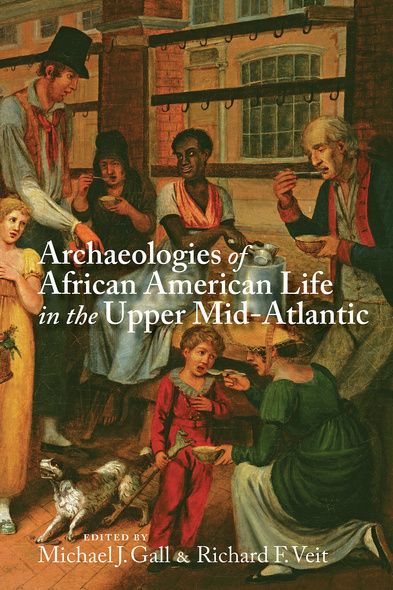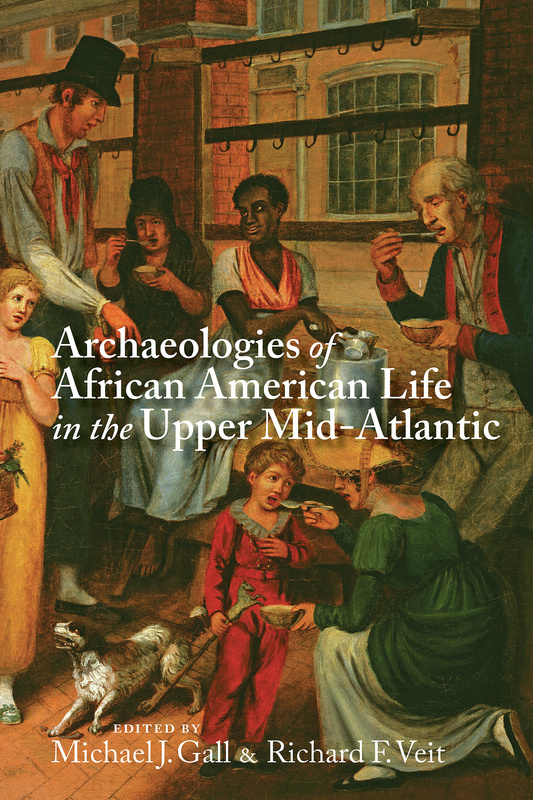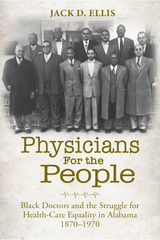
Archaeologies of African American Life in the Upper Mid-Atlantic
New scholarship provides insights into the archaeology and cultural history of African American life from a collection of sites in the Mid-Atlantic
This groundbreaking volume explores the archaeology of African American life and cultures in the Upper Mid-Atlantic region, using sites dating from the eighteenth through the twentieth centuries. Sites in Delaware, Pennsylvania, New Jersey, and New York are all examined, highlighting the potential for historical archaeology to illuminate the often overlooked contributions and experiences of the region’s free and enslaved African American settlers.
Archaeologies of African American Life in the Upper Mid-Atlantic brings together cutting-edge scholarship from both emerging and established scholars. Analyzing the research through sophisticated theoretical lenses and employing up-to-date methodologies, the essays reveal the diverse ways in which African Americans reacted to and resisted the challenges posed by life in a borderland between the North and South through the transition from slavery to freedom. In addition to extensive archival research, contributors synthesize the material finds of archaeological work in slave quarter sites, tenant farms, communities, and graveyards.
Editors Michael J. Gall and Richard F. Veit have gathered new and nuanced perspectives on the important role free and enslaved African Americans played in the region’s cultural history. This collection provides scholars of the Mid-Atlantic and Northeast regions, African American studies, material culture studies, religious studies, slavery, the African diaspora, and historical archaeologists with a well-balanced array of rural archaeological sites that represent cultural traditions and developments among African Americans in the region. Collectively, these sites illustrate African Americans’ formation of fluid cultural and racial identities, communities, religious traditions, and modes of navigating complex cultural landscapes in the region under harsh and disenfranchising circumstances.
Editors Gall and Veit offer a fascinating historical spectrum of regionally specific sites within African American archaeology. The collected works go above and beyond the initial goal of simply ‘call[ing] attention to the historical contexts in which enslaved and free blacks lived, the obstacles they faced in daily life, and the ongoing power struggles within white dominated or controlled communities.’ . . . A terrific addition to the study of African American archaeology. Highly recommended.’
—CHOICE
‘This is an important collection for at least two reasons. First, it expands the knowledge about African-American daily life. All books published on the subject in archaeology also make this contribution, and each is valuable for this reason alone. But in this particular case, readers are confronted with the reality that African captivity for the purposes of forced labour existed throughout the USA until the middle of the nineteenth century, and that African-Americans still faced significant challenges after emancipation. This book offers additional object lessons to shatter the silence that once surrounded the practice of human bondage in the American North.'
—American Antiquity
‘This volume is an important regional contribution to the story of African Americans in a borderland that has been little studied. It uses the latest techniques of the growing field of historical archaeology to provide us with new insights on a critical part of American history.’
—American Archaeology
This volume is essential for scholars of African Americans, working class families, industrialization, capitalism, landscape organization, and consumerism. Past publications have often concentrated on the limitations of African American lives and achievements. Contemporary scholars highlight the agency of these marginalized groups—the talents, skills, and inspirational tactics that allowed these families to negotiate their lives, support one another, and express their identity in a highly racialized society. Together we strive for a more perfect union.’
—Journal of Middle Atlantic Archaeology
‘The first comprehensive look at the archaeology of African American sites in the Upper Mid-Atlantic. This volume should be well received by historical archaeologists of the African diaspora and historians alike.’
—J. W. Joseph, president of the Society for Historical Archaeology and coeditor of Another’s Country: Archaeological and Historical Perspectives on Cultural Interactions in the Southern Colonies
‘ . . . the combined fields of archaeology and history—inclusive of material culture—offer an excellent scholarly foray into the early lives of African Americans and the legacies that continue to resonate today.’
—Pennsylvania Magazine of History and Biography
Richard F. Veit is professor of anthropology and chair of the Department of History and Anthropology at Monmouth University. He is a North American historical archaeologist whose research focuses on the Mid-Atlantic region between the late seventeenth and early nineteenth centuries. He is the author and coauthor of six books including Digging New Jersey’s Past: Historical Archaeology in the Garden State.
List of Illustrations
Acknowledgments
Introduction: Exploring and Contextualizing Historic African American Life in a Cultural Borderland, 1690s to 1950s
Michael J. Gall and Richard F. Veit
Part I Slavery and Material Culture
1. Identifying an Eighteenth-Century Slave Quarter Complex at the Cedar Creek Road Site in Southern Delaware
William B. Liebeknecht
2. Colonoware in the Upper Mid-Atlantic and Northeast
Keri J. Sansevere
3. An Archaeological View of Slavery and Social Relations at Rock Hall, Lawrence, New York
Ross Thomas Rava and Christopher N. Matthews
Part II Housing, Community, and Labor
4. Navigation and Negotiation: Adaptive Strategies of a Free African American Family in Central Delaware
Michael J. Gall, Glenn R. Modica, and Tabitha C. Hilliard
5. The Material Culture of Tenancy: Excavations at an African American Tenant Farm, Christiana, Pennsylvania
James A. Delle
6. Mapping Marshalltown: Documentary Archaeology of a Southern New Jersey Landscape of Emancipation
Janet L. Sheridan
7. Tenants on the Woodlot: The Bird-Houston Site, St. Georges Hundred, Delaware
Jason P. Shellenhamer and John Bedell
8. The Relationships of Race, Class, and Food in the African American Community of Timbuctoo, New Jersey
Christopher Barton
Part III Death and Memorialization
9. “Born a Slave, Died Free:” Antebellum African American Gravemarkers in Northern New Jersey
Richard F. Veit and Mark Nonestied
10. Above the Valley and Below the Radar: Mount Gilead African Methodist Episcopal Church and Its Community
Meagan M. Ratini
11. An African American Union Soldier Remembered: James Elbert and the African Union Church Cemetery in Polktown, Delaware
David Orr
Part IV Reflections
12. Reflections on Dynamic African American Social Cultures and Communities in the Upper Mid-Atlantic, 1610s to 1950s
Christopher C. Fennell
13. African American Cultures and Place in the Greater Delaware Valley Borderland, 1620s to 1920s
Lu Ann De Cunzo
References Cited
Contributors
Index






